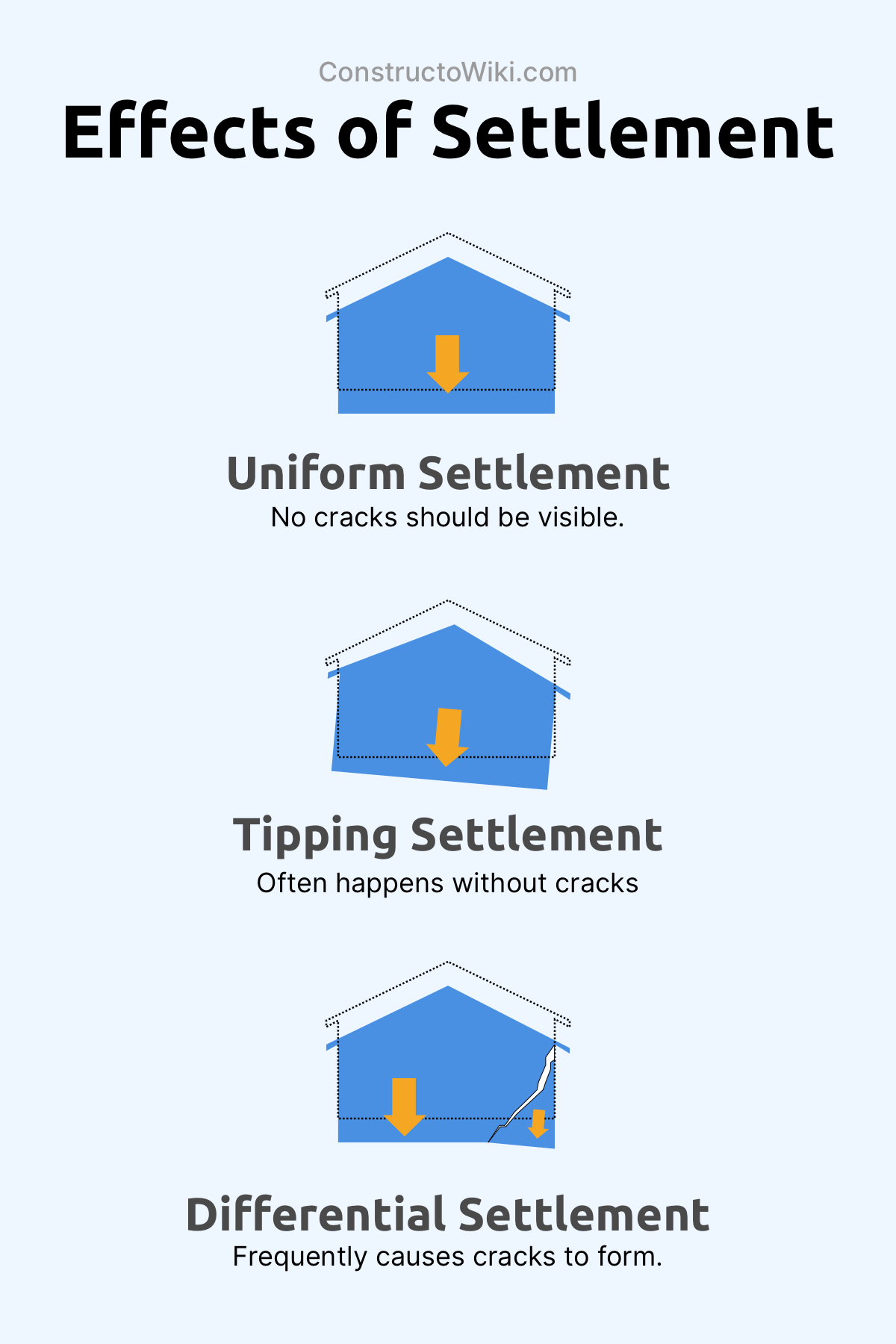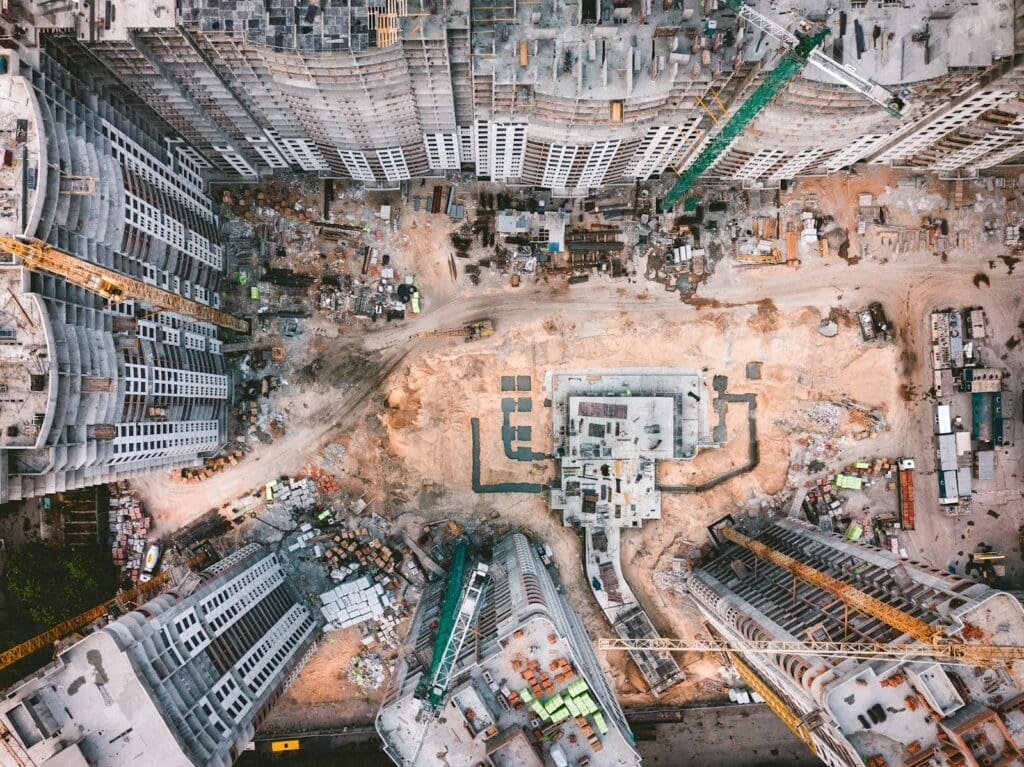Intro To Differential Settlement
Did you know that 25% of structural issues in buildings can be linked to foundation problems?
That’s right, and differential settlement is a major player in this statistic.
Today, we’ll cover what differential settlement is, what causes it, and how to identify its symptoms.
We’ll also discuss ways to prevent it from happening and explore effective solutions if it does occur.
This guide aims to provide a solid understanding, so whether you’re a homeowner, builder, or civil engineer, you’ll walk away with valuable insights.
Table of Contents
Understanding Differential Settlement in Construction

What is Differential Settlement?
Differential settlement refers to the uneven settling of a building’s foundation. This discrepancy occurs when different sections of a foundation sink at varying rates, which can lead to structural problems.
Causes of Differential Settlement
Several factors can contribute to differential settlement:
- Soil Composition: Variations in soil type, such as clay, sand, or loam, can affect how the ground settles under a structure’s weight.
- Moisture Variation: Different moisture levels in the soil can lead to inconsistent settling.
- Poor Compaction: Inadequate compaction of the soil before construction can cause certain areas to settle more than others.
- Load Distribution: Uneven weight distribution of the structure can result in parts of the foundation settling at different rates.
Impact of Soil Types on Differential Settlement
| Soil Type | Settlement Characteristic |
|---|---|
| Clay | High potential for uneven settlement due to water absorption and contraction. |
| Sand | More uniform settlement but can consolidate quickly under heavy loads. |
| Loam | Moderate settlement with fewer discrepancies compared to clay. |
Identifying Symptoms of Differential Settlement
Some visible signs of differential settlement include:
- Cracks: Cracks in walls, floors, and ceilings, especially around doors and windows.
- Sloping Floors: Noticeable slopes or dips in the flooring.
- Sticking Doors and Windows: Doors and windows that fail to open or close smoothly.
Preventing Differential Settlement
To avoid or minimize differential settlement, consider these practical measures:
- Soil Testing: Conduct thorough soil tests before construction to understand the soil’s properties and behavior.
- Proper Grading: Ensure the construction site is properly graded to facilitate proper drainage and moisture control.
- Uniform Load Distribution: Design the foundation to distribute weight evenly across the structure.
- Quality Compaction: Use proper compaction techniques to prepare the soil before laying the foundation.
For more details on this topic, check out a comprehensive guide on Civil Engineering Forum.
How to Prevent & Fix Differential Settlement

Piling and Piering
Piling and piering involve driving deep foundations into the ground to provide a stable base for the structure. This technique transfers the building load to more stable soil or rock layers found deeper below the surface.
- Steel Piers: Steel piers are driven deep into the ground until they reach a stable soil layer. They are strong and durable, providing long-term support against differential settlement.
- Helical Piles: Helical piles are screw-like steel shafts that are drilled into the soil. They are often used when ground conditions prevent the use of traditional concrete pilings.
- Concrete Piers: Concrete piers are large cylindrical columns of concrete driven into the ground until they reach a stable stratum. They are commonly used in heavy-load applications.
Grouting and Soil Stabilization
Grouting and soil stabilization techniques aim to improve the soil properties under and around the affected area. These methods help to increase the soil’s load-bearing capacity and reduce the risk of further differential settlement.
- Compaction Grouting: A high-density grout is injected under pressure into the soil, which compacts and stabilizes it. This method can fill voids and strengthen the ground.
- Chemical Grouting: Chemical solutions are injected into the soil to bind the particles together, increasing the soil’s strength and reducing its compressibility.
- Jet Grouting: High-pressure jets of grout are used to mix with and strengthen the soil in-situ, forming solidified columns that enhance load-bearing capacity.
Drainage Improvements
Improving drainage around the site can prevent water from accumulating near the foundation, which can exacerbate differential settlement problems.
- French Drains: These are trenches filled with gravel and a perforated pipe to redirect water away from the foundation.
- Surface Grading: Adjustments to the landscape grading can help ensure water flows away from the structure, reducing the risk of water infiltration and soil swelling.
Foundation Repair and Reinforcement
In some cases, the existing foundation may need reinforcement or repair to address differential settlement.
- Underpinning: This involves extending the foundation to a more stable soil layer through the use of piers or other supportive elements.
- Slab Jacking: This method involves lifting a sunken concrete slab back to its original level by pumping a mixture of sand, cement, and other additives beneath it.
- Retrofitting Reinforcement: Additional reinforcement elements like steel beams or additional concrete may be added to strengthen weak areas of the foundation.
Read more on innovative foundation repair techniques at the Structural Engineers Association website.
LONG-TERM MONITORING AND MAINTENANCE
Ensuring the longevity and stability of a structure requires ongoing vigilance, even after implementing preventive measures or corrective solutions for differential settlement. Here’s how you can maintain the health of your building foundation over time:
Regular Inspections
Schedule periodic inspections to monitor the condition of the foundation. Professional assessments can help detect early signs of differential settlement, allowing for timely intervention.
Moisture Control
Maintain proper drainage around the building to prevent water accumulation near the foundation. This includes:
- Gutters and Downspouts: Ensure gutters and downspouts are clear and direct water away from the foundation.
- Landscaping: Use landscaping techniques that promote water flow away from the structure, such as sloping the ground around the foundation.
- Irrigation Systems: Adjust irrigation systems to avoid overwatering near the foundation.
Soil Maintenance
Address changes in soil conditions that could affect the foundation’s stability:
- Soil Replenishment: Periodically check and replenish soil around the foundation to maintain its integrity.
- Vegetation Management: Control the growth of large trees and shrubs near the foundation, as their roots can disrupt soil stability.
Structural Adjustments
Implement structural adjustments as necessary to maintain the building’s integrity:
- Re-Leveling: Use slab jacking or underpinning techniques to re-level any sections of the foundation that have settled unevenly.
- Foundation Reinforcement: Strengthen the foundation with additional support structures, such as steel beams or concrete reinforcements, if needed.
Advanced Monitoring Systems
Consider installing advanced monitoring systems to keep track of the foundation’s condition in real-time:
- Settlement Monitoring Devices: Use devices like settlement plates or inclinometers to measure ground movement and foundation shifts.
- Moisture Sensors: Install moisture sensors in the soil around the foundation to detect changes in moisture levels that could affect stability.
By combining regular maintenance with advanced monitoring, you can effectively manage and mitigate the risks associated with differential settlement. This proactive approach ensures the long-term stability and safety of your building, providing peace of mind for homeowners, builders, and engineers alike.
CASE STUDIES: REAL-WORLD EXAMPLES OF DIFFERENTIAL SETTLEMENT
Understanding differential settlement through real-world examples can provide valuable insights into the challenges and solutions associated with this issue. Here are a few case studies that illustrate the impact of differential settlement and how it was addressed.
Case Study 1: Residential Building in Clay Soil
Location: Suburban neighborhood
Problem: A residential building constructed on clay soil began exhibiting signs of differential settlement within five years of completion. Cracks appeared in the walls and the floors started to slope.
Cause: The primary cause was the high plasticity of the clay soil, which expanded and contracted significantly with moisture changes, leading to uneven settling.
Solution: The foundation was reinforced using helical piles to provide deep, stable support. Additionally, a comprehensive drainage system was installed to manage soil moisture levels and reduce further soil movement.
Outcome: The intervention stabilized the foundation, halted further settlement, and restored the structural integrity of the building. Regular monitoring and maintenance plans were implemented to prevent recurrence.
Case Study 2: Commercial Building with Poor Compaction
Location: Urban area with mixed soil types
Problem: A commercial building began to show signs of differential settlement, including visible cracks in the façade and misaligned doors and windows, within a few years of construction.
Cause: The soil under the foundation had not been adequately compacted during construction, resulting in uneven settling as the building’s weight compressed the soil at different rates.
Solution: Compaction grouting was used to stabilize the soil. High-density grout was injected into the ground, filling voids and increasing soil density. Additionally, steel piers were installed to provide further support.
Outcome: The building’s foundation was stabilized, and structural issues were resolved. The commercial operations continued without further disruptions, and the building owner implemented a schedule for regular inspections.
Case Study 3: Historic Building with Drainage Issues
Location: Historic district with aging infrastructure
Problem: A historic building experienced differential settlement, leading to significant structural damage, including large cracks in the walls and uneven floors.
Cause: Poor drainage around the building led to water accumulation near the foundation, causing soil erosion and uneven settling.
Solution: A comprehensive drainage improvement plan was implemented, including the installation of French drains and surface grading to redirect water away from the foundation. Underpinning techniques were used to extend the foundation to stable soil layers.
Outcome: The foundation was stabilized, and the building was preserved. The drainage improvements effectively prevented further soil erosion, and the historic building was saved from potential collapse.
Lessons Learned from Case Studies
- Importance of Soil Testing: Thorough soil testing before construction can identify potential issues and inform appropriate foundation design.
- Proper Construction Practices: Adequate soil compaction and load distribution are critical to preventing differential settlement.
- Effective Drainage Solutions: Managing water around the foundation is essential to maintaining soil stability and preventing settlement.
- Regular Monitoring and Maintenance: Ongoing inspections and maintenance can detect early signs of settlement and allow for timely interventions.
These case studies highlight the importance of understanding the specific causes of differential settlement and implementing tailored solutions to address the unique challenges of each site. By learning from these examples, homeowners, builders, and engineers can better prepare for and manage the risks associated with differential settlement.
Conclusion On Differential Settlement
Differential settlement poses a significant threat to building integrity, often resulting from various soil types, moisture conditions, and poor load distribution.
Identifying warning signs like cracks and sloping floors early on can prevent severe structural damage. Implementing preventive measures such as soil testing and proper grading can mitigate risks, while solutions like piling, grouting, and drainage improvements offer corrective action to maintain construction stability.
Frequently Asked Questions – FAQs
What is differential settlement?
Differential settlement is the uneven sinking of a building’s foundation, caused by varying soil conditions under the structure.
What signs indicate differential settlement?
Symptoms include cracks in walls, sloping floors, and doors or windows that stick.
How can differential settlement be prevented?
Preventive measures include thorough soil testing, proper site grading, and ensuring uniform load distribution along with adequate soil compaction.
What are common solutions for differential settlement?
Solutions such as piling and piering, grouting, and soil stabilization, along with drainage improvements and foundation repair, can effectively mitigate issues.
Is professional consultation necessary for addressing differential settlement?
Yes, consulting with structural engineers and professional contractors ensures correct diagnosis and appropriate remedies for differential settlement issues.






